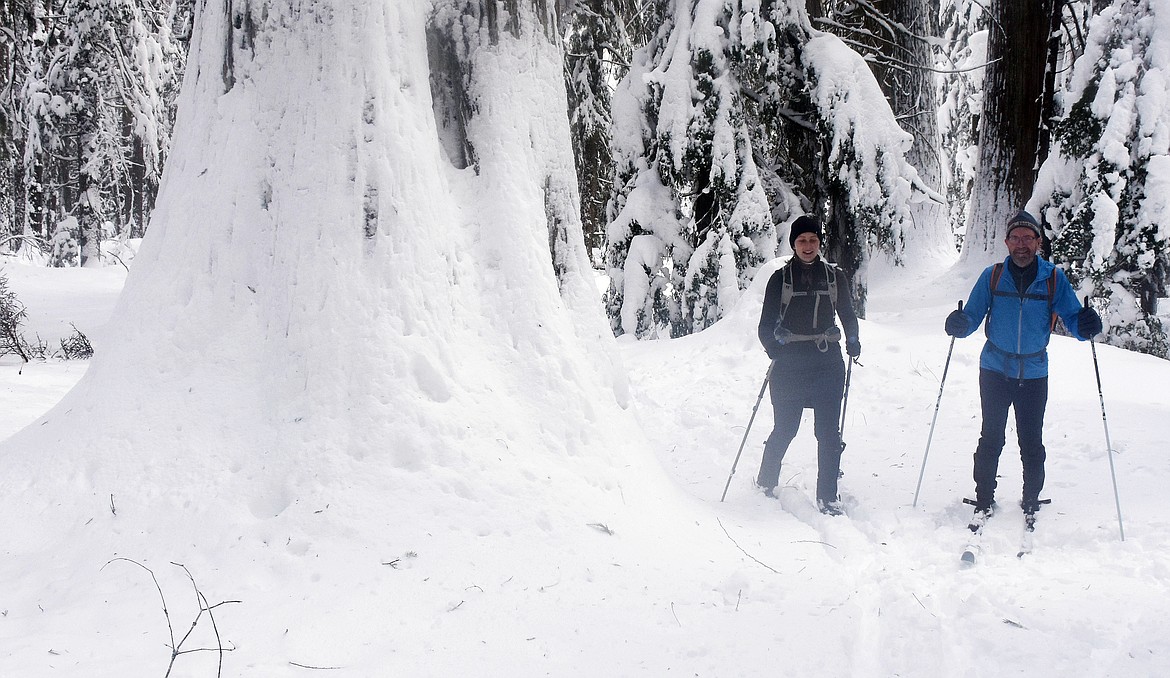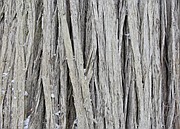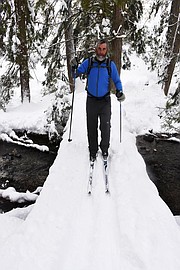Amongst silent giants
The grove of western red cedars includes ancient specimens that were likely growing around the time the Spanish introduced horses to North America in the early 1500s.
Some of the trees are believed to be even older.
The Kootenai National Forest, which hosts the grove, estimates the oldest trees likely range in age from 500 to 1,000 years old, with the latter trees possibly dating back to the High Middle Ages in Europe.
The trees’ longevity, their impressive girth — up to eight feet in diameter — towering height, up to 175 feet, and the serenity of their setting draw visitors year-round to the Ross Creek Cedars Scenic Area.
But winter visits demand a measure of gumption.
The Friends of the Scotchman Peaks Wilderness notes that the soaring cedars in summer — when visitors can drive to the site on a Forest Service road — offer “a place of cool, quiet refuge,” with a “shaded canopy of tall cedar boughs.”
And then there’s winter, when a trip to the grove requires snowshoes or cross-country skis.
“For profound solitude there is no substitute for a winter walk into these magnificent cedars,” the Friends of Scotchman Peaks observes.
Signage suggested the ski into the Ross Creek Cedars is three miles. Yet the group of six skiers that made the trek earlier this month passed the three-mile marker on the snow-covered road to the grove of cedars and kept on pushing for at least another half mile.
No one seemed to mind.
And that was true even though the air temperature had warmed and snow had begun to cling to the bottoms of the cross-country skis. The buildup creates an annoying drag, slowing progress and increasing the chances of an undignified face plant in knee-deep snow.
And a tumble on cross-country skis, especially when the fall occurs in deep snow, can elicit colorful language. The skier rediscovers the timelessness of that old television commercial line: “I’ve fallen and I can’t get up.”
Whitefish-based Allie Maloney, Northwest Montana Field Director for the Montana Wilderness Association, organized and led the Jan. 19 outing. The trip was free and open to members and non-members of the association. Jessie Grossman, a Troy-based staff member of the Yellowstone to Yukon Conservation Initiative, co-led the trip.
Other participants included Bill Watson and John Ryan, both from Missoula, and Katherine Maudrone, from Thompson Falls. One area woman who signed up bailed out quickly. She was new to cross country skiing and using borrowed gear. After a couple of early spills, she decided that discretion was, indeed, the better part of valor.
The winter outing was one of many Wilderness Walks organized statewide by the Montana Wilderness Association. Maloney said the association’s walks continue a 60-year tradition launched by the late Ken and Florence Baldwin, who helped found the Montana Wilderness Association.
During the summer of 1960, the Baldwins led 14 hikers into the Crazy Mountains and followed that by taking 40 hikers to Table Mountain in the Spanish Peaks. The couple soon began recruiting other wildlands enthusiasts to lead hikes across the state, according to the Montana Wilderness Association.
“The Baldwins set in place a program that still gets outdoor enthusiasts — novice, expert, and in-between — out into Montana’s wild landscapes,” reports the association. “Keeping with the Baldwins’ vision of using Wilderness Walks as a way to build grassroots support for Montana’s wild places, we continue to offer hikes into our campaign landscape areas to educate participants about the landscape and how we can protect it.”
Such campaign landscapes include, among others, areas within the Cabinet Mountains, the Scotchman Peaks and the Yaak.
The 100-acre Ross Creek Cedars Scenic Area offers visitors a trail through habitat embraced for hundreds of years by western red cedar, a species important to many Native American tribes. With Ross Creek meandering through, the site is shady, cool and moist.
On Jan. 19, as the day warmed, the ancient cedars welcomed visitors by generously showering them on occasion with snow shed by once-weighted boughs.
Later, Bill Watson reflected about his first experience of the site.
“I’d say the cedars met or exceeded my expectations,” he said. “I’ve not seen the redwoods of California, but for me it’s the closest I’ve seen compared to them. It was great to see the cedars for the first time in winter when it wasn’t crowded; I’m guessing it can be a busy spot during the summer.”
John Ryan said the Montana Wilderness Association outings “are a great way to discover and explore beautiful corners of the state.”
He added, “Thanks and kudos to the MWA for their work in protecting these areas. Coming from Missoula, this part of Montana is clearly much wetter and more heavily forested. The views of the Cabinets while skiing up the access road to the cedars were spectacular. I will be back.”
The Ross Creek Cedars Scenic Area is about 29 miles south of Troy off Montana Highway 56 and Ross Creek Cedars Road. The Bad Medicine Campground is nearby. For more information, go to: https://www.fs.usda.gov/detailfull/kootenai/specialplaces.
Another free regional outing offered by the Montana Wilderness Association is planned for Feb. 8, when Maloney will team up with Henry Jorden of the Friends of Scotchman Peaks Wilderness for a guided snowshoe hike along Callahan Creek Historic Trail in Troy. The easy two-mile snowshoe is described as family-friendly.
For more information, go to: wildmontana.org/discover-the-wild/wilderness-walks/2020-winter-adventures/northwest-montana-walks.







